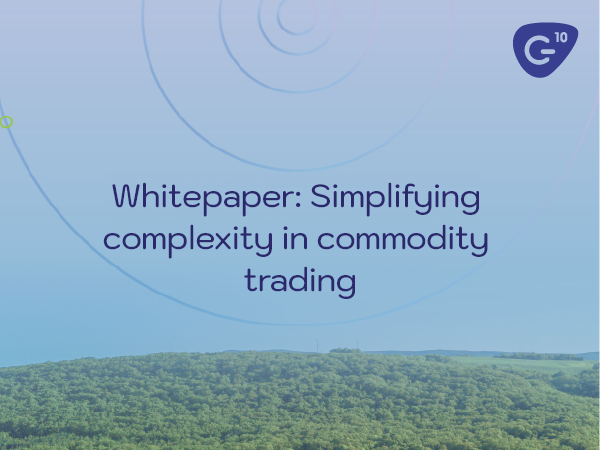Data and its management are at the heart of commodity trading.
Many older CTRMs do a fine job of capturing trading and associated data but are less than adequate when it comes to allowing easy access to that data, visualising it and sharing it with others. These are often called ‘black boxes’, in which it is easy to enter data but extremely difficult to report on it in the ways that trading firms would like. This means that your trading operations can actually be made more difficult and involve more operational risk because of your risk management system!
These systems were often designed to be used as a stand-alone entity, with organisations entering their data and generating specific reports that were available within the CTRM. However, many organisations needed to expand on the CTRM functionality, access and utilise the data captured in the CTRM – the system of record for many types of trade data – and soon found themselves limited if the system did not meet all their reporting, data and commodity management needs.
Commodity Management Systems share more data
Modern Commodity Management Systems are built from a more collaborative starting point. They should already make use of modern data connectors such as APIs and integration with other software systems to ensure seamless live transfers of data into the commodity management system – which means these same technologies can be used just as easily to share data from the CTRM back out to other systems. And with the right technology, this can be done in real-time throughout the day with no need for human intervention or manual copying.
One of the major advantages is that data is exported however clients need it. For example, with Gen10’s CommOS, you can choose to export data as various file types (including XML and CSV), populated contract or quality documents, or use our reporting API to update your spreadsheet reports. This is of course in addition to the integrations with other systems that allow you to combine your data however you need and report on it in the most relevant way – whether that’s within CommOS or not.
The opportunities
There are many reasons why organisations need to get data out of their CTRM and therefore many opportunities that are created when the system makes this easier to achieve.
Sharing data with the value chain
Sharing data with your value chain may not immediately appear to be a significant business opportunity, but automating regulatory and compliance reports can free up a great deal of time to focus on more valuable activities. And it can present some opportunities in itself. For example, many banks have tightened their trade finance lending criteria, meaning that some finance arrangements are only available to organisations who can provide the appropriate assurance data.
Opportunities can also be presented through ensuring contracts contain all relevant quality data and are priced based on the true value of any quality information or assays. Again, this relies on being able to manipulate the data in your CTRM but also on being able to accurately share this information with counterparties without creating an administrative burden.
Visualising data
Modern Commodity Management Systems likely already contain far more data visualisation tools than older CTRM systems. For example, CommOS includes flexible dashboards that each user can customise for themselves, including adding their own self-created reports and data visualisations.
But you may wish to combine larger datasets or have a team providing data visualisations in a different BI tool. So we ensure that our clients have easy access to reporting and data export tools that allow them to visualise their data using their preferred platform as well as in their Commodity Management System, so that they can make the best, data-driven decisions.
Data-driven decision-making
CTRM systems are designed to allow you to analyse data and make informed decisions within the system and that is of course important. But what if you want to analyse data that’s held in other business intelligence systems or combine datasets to perform big data analysis?
A CTRM may not be the best place to combine all your disparate data sets to identify market opportunities and predict future trends. The best systems for data-driven decision-making therefore give you optionality. To take CommOS as an example, your people can analyse information within the system to make rapid decisions in the moment as part of their flow of work. Or they can export the data using any of the channels listed above to perform complex analysis in whichever BI solution they prefer.
Integrating your processes
Business process efficiency is an opportunity that every organisation can work towards. And integrating your operational and reporting systems is a great way to improve this efficiency. Integrating systems can lead to better processes with less friction and much less operational risk due to all data-sharing being automatic, and it also means that your people can make better decisions based on the readily available information.
And integrating systems and processes provides far more extensibility than relying on a single software provider. As your business grows or you look to develop capabilities in new areas, a commodity management process built on interoperability and integrations means you can add whichever new technologies are best for your business. When you are looking to add new software, you are not limited to your existing provider but can instead choose the best solution and integrate it into your existing processes. You can rely on the data integrations to give you the full benefit of every system you are using, without increasing the administrative burden and risk of errors associated with manually copying information between systems.
Commodity Management ecosystems are the way to go
Getting data out of a CTRM system can be a challenge for any commodity trading company, slowing down operations and limiting decision-making. But Commodity Management Systems are the opposite. These systems are designed to be collaborative, flexible, and extensible, sharing data wherever and however you need it. After all, it’s your company’s data and you should be able to use it however works best for you.
Want to read more?
Subscribe now for monthly updates
By submitting your details you agree that we can store your data and communicate with you. You can opt out of these communications at any time. Read all in our Privacy Policy.



